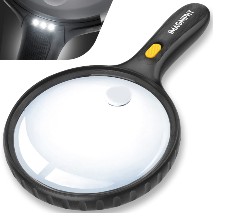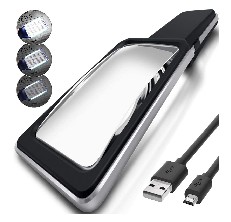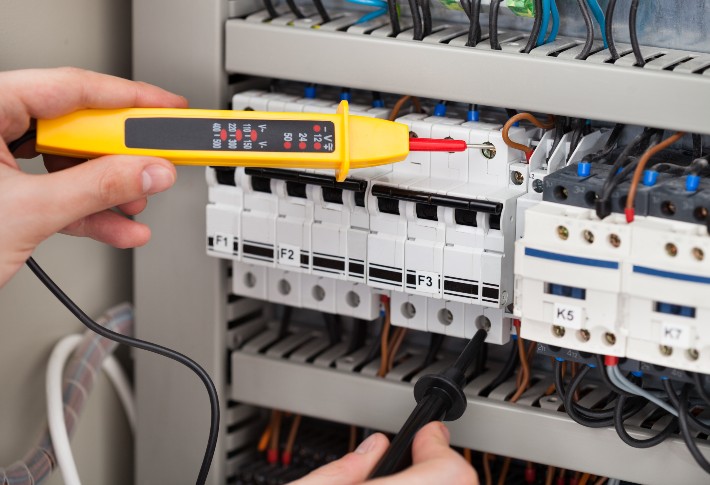Make Sight Easy With The Best Extra-Large Magnifying Glass
Do you have to deal with projects related to jewelry, embroidery, or circuitry? How daunting may the process seem even if you don’t own a magnifying glass? It’s best to get a quality and reliable pair, but you must be able to define one, depending on the sizes, materials, and durability. Having one of these can help ease the stress off your table and hasten jobs that would have taken longer to finish if not with a working glass.
Magnifying glasses are also useful for those who have to study paperwork, newspapers, magazines, or even academic papers. Check out our list of recommended micro-visual tools.
Best Extra-Large Magnifying Glasses: Compared
iMagniphy Magnifying Glass
– Best OverallThis magnifying glass will bring your children the adventurous nature of roaring to life while allowing them to discover and explore things the normal eyes may not see.
With the iMagniphy Extra-large shatterproof magnifying glass, you do not have to worry when you are studying books, looking at coins, or examining small creatures. It features a scratch-resistant and robust lens which gives the best quality images without distortion. One outstanding feature of this lens is its super-strength LED light which makes it perfect for night or day use and can last over 50,000 hours of use. The non-slip grip feature is one thing that makes these glasses easy for seniors and kids to handle.
MagniPros 3X Large Magnifying Glass
– Runner UpFor broader coverage, talking about a page or so, you can use this glass conveniently. Its ultra-bright light yields brighter vision and consumes less power. Thanks to the lightweight and non-slip texture, you can comfortably hold it.
The 2x longer lifespan makes it the people’s favorite, compared to traditional LEDs. You can hold it in a portrait or landscape angle, and any which way seems fair. The fascinating part, it is an excellent choice for more prolonged reading, with no fatigue drivers or whatsoever. We think this magnifier brings more life to the world of optics.
- The lens consists of enhanced unbreakable material.
- The lifespan is up to 100,000 hours of use.
- The magnifier excludes a stand.
Magnipros 4X Magnifying Glass
– Honorable MentionMade with a durable horizontal lens, this magnifier fits the way we read. Thanks to the ergonomic handle, you can hold it for long hours without discomfort. The LED light has a lifespan of 20 years without overheating.
The 700 mAh battery is rechargeable and irreplaceable, meaning you won’t be needing a new one. For a quick charge, connect the USB cable included in the package to electricity. The lens is suitable for those with low vision, or aging eyes, and Macular Degeneration.
- Comes with an enhanced and more evenly lit display area.
- The complete pact offers a microfiber pouch and cleaning cloth.
- The on/off switch is flimsy.
Buying Guide for the Best Extra Large Magnifying Glasses
Human vision is restricted, and our eye lens can read tiny words or view smaller objects up to a certain extent. However, beyond that level, the convexity of our eye lens can’t change to allow a convergence of the light rays entering through the cornea. This is why when certain words or objects are very small, we can’t view them properly with our naked eyes.
Under such circumstances, we rely on an external convex lens, also known as a magnifying glass. Several magnifying glasses are there, depending on the lens size, focal length, radius of curvature, thickness, and even material with which they are made. Today, however, we will focus on the extra-large magnifying glasses used to study minute objects not visible to the naked eyes.
What Is the Difference Between an Extra-large Magnifying Glass and Microscope?
Before we start today’s main discussion, we would like to discuss a major controversial topic. So often, people get confused between a magnifying glass and a microscope as both the devices almost have the same function, i.e., magnification of the object to be viewed. Since here we will be discussing the extra-large magnifying glasses, understanding the differences between these two lens devices is imperative. At least, after this, you will have clarity!
An extra-large magnifying glass has only one convex lens, with a higher focal length than the normal ones. Thus, one can see smaller and minute objects using these glasses, provided they appear blurry or distorted to the naked eyes. You will have a circular rim that encapsulates the lens and a handle for holding the device.
On the other hand, a microscope is a more complex device having two lenses with different focal lengths. These devices will allow you the highest degrees of magnification, allowing you to see things that are invisible to the naked eyes. So, a microscope can be considered an advanced version of a magnifying glass.
Now, let’s dive in to explore some factors to choose the best extra-large magnifying glass.
What Are the Key Considerations To Purchasing an Extra-large Magnifying Glass?
Type of lens combination
The first thing you need to know is the various lens combinations available for extra-large magnifying glasses. Each combination uses a different lens and also has a specific purpose.
- A simple convex lens will give you a magnification of 2x or 3x. It is used mainly for low-power work to view the object, but the images are blurred.
- An achromat is a combination of a concave and convex lens cemented together. To reduce the color fringes and chromatic aberrations, such a combination is used. Also, with the achromat, the magnification power is increased considerably.
- The doublet lens consists of two semi-convex lenses, placed in conjunction without any join between them. The bulging part of the lenses is placed towards the inner side for better magnification.
- Triplet lenses have a combination of convex-concave-convex. With this combination, there will be no image distortion or chromatic aberrations. The triplet lens provides the highest magnification power.
Working distance
Working distance is the length between the magnifying lens and the object to be viewed. It can be equal to the focal length of the lens or greater than that. However, the working distance is usually kept between the center of curvature and the optical point of the lens being used. Therefore, if you need some tool between the lens and the object under inspection, the working distance should be greater to accommodate the tool. Similarly, there is no need to look for a magnifying glass with a large working distance for simpler works.
Magnification
Magnification is defined as the ratio of the height of the image to the height of the object. In simple words, it is the number of times the object will be enlarged when being viewed through the optical lens. The higher the magnification, the larger will be the image through the lens and vice versa. For better visibility and deeper inspection, you need at least 10x, 15x, or 20x magnification. 2x or 3x magnification power is ideal for smaller works. To calculate the magnification power, you can use the formula as M= 10/FL, where FL is the lens’s focal length.
Field of view
According to the physical definition, the field of view or FOV is considered the open area that can be viewed easily through the eyes or an optical device like the magnifying lens. It is an important factor to consider because FOV includes a larger area, thereby defining the boundaries of a clear vision rather than including only the focal point. With more power, the FOV will decrease. For example, a 10x magnification will have about 0.5″ FOV while a 3x magnification will have more than 1.5″ FOV. Hence, for scanning smaller areas, you need a small FOV or larger magnification and vice versa.
Coatings
Regardless of the focal length of the lens’s magnification power, it would be best if you bought a magnifying glass that comes with a coated surface. Anti-glare, anti-reflective, and other types of coats are applied to increase the performance and efficiency of the extra-large magnifying glasses. Also, with a coating, the image will have more clarity, and you won’t have to put stress on your eyes.
Warranty
Even though nothing can go wrong with an extra-large magnifying glass, the same can’t be said about the LEDs integrated into some of the magnifiers. So, you should always check the warranty offered by the brand. Usually, these magnifying glasses either have a warranty period of 30 days or 1-2 years. However, some units also offer a lifetime warranty.
Final Words
From the attributes mentioned earlier, you will be able to choose the best extra-large magnifying glasses for yourself. Not only will it help you to view the smaller objects clearly, but it also will alleviate the pressure on your eyes due to stressed viewing. All you need to do is compare all the magnifying glasses you have in the list based on the factors we have discussed above.
People Also Asked
A: Several extra-large magnification glasses are there in the market. To choose the best one, you must proceed carefully and consider all the technical details without fail.
A: No, it is not necessary to buy an extra-large magnifying glass that comes only with LED lights. The light’s presence is merely a cherry on top of the cake as you can read or view the object in a dark room.
A: Even though there will be no problem in wearing spectacles while handling the magnifying glass, it's recommended not to wear one if your eye lens has a lower power value.






